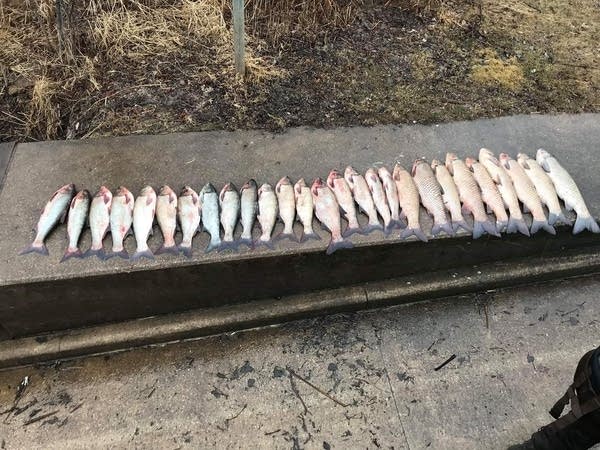51 invasive carp caught in Mississippi River near La Crosse

Go Deeper.
Create an account or log in to save stories.
Like this?
Thanks for liking this story! We have added it to a list of your favorite stories.
The discovery of 51 invasive carp in the Mississippi River on the southeastern Minnesota-southwestern Wisconsin border — the largest number of invasive carp found so far upstream — has state authorities mobilizing to boost netting and monitoring of the destructive fish.
Commercial fishing operators called in the Minnesota Department of Natural Resources after catching the fish last weekend near La Crosse and Trempealeau, Wis.
The DNR said it identified 39 silver carp and 11 grass carp caught just south of La Crosse. A silver carp was caught about 20 miles farther upstream. Silver carp are the kind that in other states are known to leap out of the water and cause havoc for boaters.

The high number of carp found last weekend is likely related to the recent flooding along the Mississippi, said DNR invasive species supervisor Heidi Wolf.
Turn Up Your Support
MPR News helps you turn down the noise and build shared understanding. Turn up your support for this public resource and keep trusted journalism accessible to all.
While no breeding populations have been detected in Minnesota waters to date, Wolf cautioned that it’s too early to say whether that’s changed given this recent large discovery.
“That’s a concern for sure, but there’s no way to tell whether a spawning event may or may not have occurred,” she said. “The fish that we have in for testing, that’s one of the things that we may be able to tell if they spawned or not, but we won’t know where that might have happened. So it’s unfortunately kind of a gray area.”
Invasive carp are voracious eaters and pose an ecological threat to rivers and lakes by crowding out native fish species. There’s long been a concern that they will continue to move north, possibly into the Great Lakes. Authorities in 2015 closed the Mississippi River lock at Upper St. Anthony Falls in Minneapolis in hopes of checking the spread of carp upstream.
They’ve been caught just south of the Twin Cities in the Mississippi River and in the St. Croix River near Oak Park Heights. In 2017, a massive bighead carp was caught in a private gravel pit within the Minnesota River floodplain near Redwood Falls in southwestern Minnesota.
Wolf said researchers will be examining the recently caught carp to determine their size, age, weight and gender. “We're hoping to reduce the number that are out there if there's more and also gain some more information about the population that's there right now,” she said.


